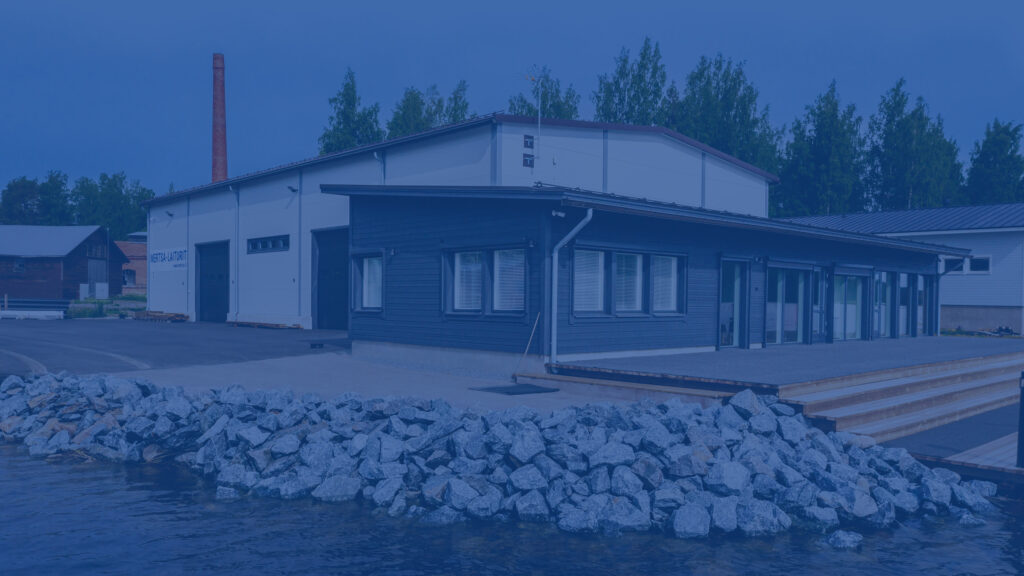The reform of Weckman’s steel hall production will reduce the carbon footprint of the halls from manufacturing to commissioning: the amount of steel used in production will be reduced by up to 25%, which will in turn reduce the environmental burden caused by the transport and mounting of the halls. CO2 emissions will decrease by about a million kilos per year as a result of the reduction in steel use alone.
In Weckman’s halls, steel is only used where necessary and otherwise its use is minimised. “We design even the more challenging and complex structures as cost-efficiently as possible, without compromising on quality and durability. We will optimise our steel use even further, which will reduce the use of steel for halls by up to 25%,” says Weckman’s hall product range manager Tommi Purtilo.
Reform of hall production will bring about significant accumulative effects
Each one kilogramme reduction in the use of steel in production in turn reduces carbon dioxide emissions by 1.5–2 g. “At our current rate of growth, we will use 500 tonnes less steel a year, translating into a one million kilogramme reduction in carbon dioxide emissions,” explains Purtilo.
Road transport and emissions generated by transport operations will also decrease as the use of steel is reduced. “The accumulative effects of our production changes are significant. Raw material deliveries and transport of finished products from our plant will also decrease, which will be reflected in fuel consumption and wear to the road network,” says Purtilo.
As less steel is used, installation times become shorter and heavy lifting devices and other vehicles are required less on the worksites, which will affect the volume of worksite traffic, thereby reducing the risk of accidents, for example. “Particularly on the worksites located in city centres, less traffic means less noise and other disturbances to local road users,” explains Purtilo.
The GreenCoat®-coated steel used for Weckman’s thin sheets reduces the carbon footprint of halls
For all non-insulated Weckman halls, the use of SSAB GreenCoat®-coated steel is favoured. In this steel, some of the fossil-based oil is replaced with rapeseed oil. The GreenCoat® steel is also used for sandwich walls and roof elements, whenever possible, as its use reduces carbon dioxide emissions caused by steel coatings.
“About 60-70% of our coated thin sheet products are made of the GreenCoat® steel. In Finland, about 20% of the metal used by SSAB is recycled. Their blast furnaces cause 7% less carbon dioxide emissions than blast furnaces in the EU on average,” notes Purtilo.
Adaptable structure guarantees a long service life for steel halls
The minimum lifespan of Weckman halls is 50 years but often they only reach the end of their service life when they are no longer required for their current purpose. Therefore, they are designed for adaptability: they can be used for various purposes. As the halls do not have columns in the centre, they lend themselves for various uses, from tennis halls to industrial production facilities. For example, interior walls can be added easily.
“The most environmentally friendly hall is the one that does not have to be built from scratch; instead the hall is given a new lease of life by adapting it to the new owner’s use. Many of our halls have been dismantled, transferred and rebuilt in a new location, with very little alteration work required. When the hall finally reaches the end of its service life, all the steel can be recycled,” explains Purtilo.
In the future, recycled concrete will also be used for Weckman’s steel halls. “The production of one kilogramme of concrete generates 0.7 kg of carbon dioxide. If we can replace half of the concrete used for foundation pads and flooring with recycled concrete, we can also halve the carbon dioxide emissions,” says Purtilo.
Financial benefits with greener construction materials
In the future, the financial benefits of choosing emission-free construction materials for renovation projects and new builds will be emphasised. “Emissions generated during the construction and use of the building may affect property taxes or construction subsidies. Green choices may offer financial benefits in addition to being a competitive edge for the owners and landlords,” says Purtilo.
Operators whose buildings have high Environment, Social and Governance ratings attract more interest among investors and can utilise green choices in their marketing.
“We also continually developour energy-efficiency during construction and use, to make sure that our halls can be heated with as little heat wasted as possible. We are designing solar panel solutions for the hall roofs so that the necessary installation factors are considered during the construction stage. This brings synergy benefits in the mounting of solar panels and may also help secure additional funding for the project from the Centre for Economic Development, Transport and the Environment or Business Finland”, says Purtilo.
This is how Weckman steel halls reduce the burden on the environment:
-25 % less steel and emissions caused by its transport
-1 million kilogrammes less CO2 emissions per year
-60 % of the thin sheets used for the halls are made from eco-friendly GreenCoat® steel
-100% recyclable steel at the end of the hall’s service life



